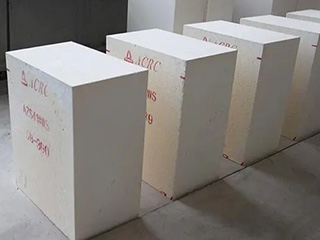Corundum bricks are a type of refractory brick that are known for their high temperature resistance, durability, and excellent thermal shock resistance. In this article, we will explore the properties and benefits of corundum bricks, their applications, and the different types of corundum bricks used in industry.
Properties and Benefits of Corundum Bricks
Corundum bricks are made from a mixture of corundum and other refractory materials. Corundum, also known as aluminum oxide, is a high-purity material that is highly resistant to thermal shock, corrosion, and abrasion. Corundum bricks have an alumina content of over 90%, making them one of the most durable and heat-resistant types of refractory bricks.
Some of the key properties and benefits of corundum bricks include:
1.High temperature resistance: Corundum bricks can withstand temperatures of up to 1900°C, making them ideal for use in high-temperature applications such as furnaces and kilns.
2.Excellent thermal shock resistance: Corundum bricks have excellent thermal shock resistance, meaning they can withstand rapid temperature changes without cracking or breaking.
3.Good resistance to abrasion and corrosion: Corundum bricks are highly resistant to abrasion and corrosion, making them ideal for use in harsh environments where corrosive materials are present.
4.High mechanical strength: Corundum bricks have high mechanical strength, meaning they can withstand mechanical stress and maintain their shape and integrity under harsh conditions.
5.Good insulation properties: Corundum bricks offer excellent insulation, reducing heat loss and energy consumption in high-temperature applications.

Applications of Corundum Bricks
Corundum bricks are widely used in various industries, including metallurgy, ceramics, petrochemicals, and glass manufacturing. Some of the most common applications of corundum bricks include:
1.Furnaces: Corundum bricks are used to line the walls, floors, and roofs of furnaces used in high-temperature processes, such as melting metals, refining ores, and making ceramics.
2.Kilns: Corundum bricks are used to line the walls, floors, and roofs of kilns used in the production of cement, glass, and other high-temperature materials.
3.Incinerators: Corundum bricks are used to line the walls and floors of incinerators, where they provide excellent resistance to corrosion and abrasion.
4.Chemical reactors: Corundum bricks are used in chemical reactors, where they provide excellent resistance to chemical attack.
5.Glass furnaces: Corundum bricks are used in glass furnaces, where they provide excellent resistance to thermal shock and high-temperature corrosion.
Types of Corundum Bricks
There are several different types of corundum bricks used in industry, each with its unique properties and benefits. The most common types of corundum bricks include:
1.Dense Corundum Bricks: Dense corundum bricks are made from high-purity corundum and other refractory materials. They have a low porosity and high mechanical strength, making them ideal for use in high-temperature applications where abrasion and thermal shock resistance are required.
2.Corundum Mullite Bricks: Corundum mullite bricks are made from corundum and mullite, a mineral that has excellent thermal shock resistance. Corundum mullite bricks offer excellent thermal shock resistance and high mechanical strength, making them ideal for use in high-temperature applications such as glass manufacturing.
3.Corundum Spinel Bricks: Corundum spinel bricks are made from corundum and spinel, a mineral that has excellent thermal shock resistance and abrasion resistance. Corundum spinel bricks are ideal for use in high-temperature applications where thermal shock and abrasion resistance are required, such as in cement kilns and steelmaking furnaces.
4.Corundum Chrome Bricks: Corundum chrome bricks are made from corundum and chrome oxide, a mineral that provides excellent resistance to thermal shock and corrosion. Corundum chrome bricks are ideal for use in high-temperature applications where thermal shock and corrosion resistance are required, such as in chemical reactors and glass furnaces.
5.Bubble Alumina Corundum Bricks: Bubble alumina corundum bricks are made from a mixture of corundum, bubble alumina, and other refractory materials. They have a high porosity and low thermal conductivity, making them ideal for use as insulation materials in high-temperature applications.
Conclusion
Corundum bricks are a type of refractory brick that are known for their high temperature resistance, durability, and excellent thermal shock resistance. They are widely used in various industries, including metallurgy, ceramics, petrochemicals, and glass manufacturing. The different types of corundum bricks offer unique properties and benefits, depending on the specific requirements of the application. Choosing the right type of corundum brick and ensuring regular maintenance can help to ensure their longevity and effectiveness in high-temperature applications.
Contact: Mgr. Han
Phone: 0086-13589497465
Email: 1255953279@qq.com
Add: Industrial Area of Lingzi Town,Zichuan District,Zibo City, Shandong,China